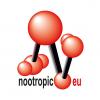pharmacy1010 has added noopept for $16 (russian price is $10)
I think Noopept may be similar to vasopressin.
Vasopressin gets metabolized, and only a fragment of it deals with memories processes in the brain.
The main metabolite of noopept, cycloproglycine, is found naturally in the brain.
Since it is very similar to piracetam, and 1000X more potent than piracetam, this may be what piracetam's method of action is working on.
------------------------------------------------------------------------------------------------------
[Design of the novel dipeptide neuropsychotropic drug preparations]
[Article in Russian]
Gudasheva TA, Skoldinov AP.
Zakusov Institute of Pharmacology, Russian Academy of Medical Sciences, Baltiiskaya ul. 8, Moscow, 125315 Russia.
The paper considers a new strategy in the field of neuropsychotropic dipeptide drug design, the main points being as follows: (i) determination of the structural elements of dipeptides, such as fragments of amino acid side radicals and peptide bonds, in nonpeptide drugs; (ii) design of peptide analogs topologically close to the drug; (iii) synthesis and activity testing of these analogs; (iv) determination of the corresponding endogenous neuropeptide among the known neuropeptides or identification of the new neuropeptides in the brain of experimental animals. Using this approach, new pyroglutamyl- and prolyl-containing dipeptides were obtained based on the structure of the well-known classical nootropic drug piracetam. The new drugs exhibit nootropic activity in doses 100-10,000 times lower than those of piracetam. The structure of most active pyroglutamyl dipeptide pGlu-Asn-NH2 coincides with that of the N-end fragment of the endogenous memory peptide AVP(4-9). Noopept (N-phenylacetylprolylglycine ethyl ester), patented in Russia and USA as a new nootropic drug, is currently under stage 2 of successful clinical trials. The main metabolite of noopept, cyclo-Pro-Gly, is identical to the endogenous dipeptide designed in this work and is most close analog of piracetam with respect to pharmacological activity. The universal character of the proposed strategy is demonstrated by the design of active dipeptide analogs of an atypical neuroleptic drug sulpiride. As a result, a potential dipeptide neuroleptic dilept was obtained, which has been patented in Russia and now passes broad preclinical trials.
----------------------------------------------------------------------------------------------------------------------------------------
pdf of actual study:
http://www.scribd.co...ents-DisruptionNo. 302, a newly synthesized [pGlu4,Cyt 6]AVP(4-9) analogue, prevents
the disruption of avoidance behavior
Kenji Hirate a,,, Masuharu Hirano a, Yoshiharu Nakajima b, Akio Hiyama a, Osamu Maeda a,
Wataru Asakura ~
a Research Laboratories, Nippon Chemiphar Co. Ltd., Misato, Saitama 341, Japan
b Pharmaceuticals Research Laboratories, Fujirebio Inc., Hachioji, Tokyo 192, Japan
Received 8 July 1995; revised 5 February 1996; accepted 6 February 1996
Abstract
We investigated the effects of [pGIu4,Cyt6]AVP(4-9) fragments and its analogues on cycloheximide (CHX)-induced learning
impairment in rats using the step-through-type passive avoidance test in rats. CHX (2.8 mg/kg, s.c.) significantly shortened the
step-through latency in the retention trial, pGlu-Asn-Cys(Cys)-Pro-Arg-Gly-NH2 ([pGlu4,Cyt6]AVP(4--9); 10 ng/kg, s.c.), a
major metabolite of arginine vasopressin, improved the CHX-induced learning impairment. Asn-Cys-Pro-Arg-OH
(I-Cys 6] AVP(5-8); 1 ng/kg) corrected avoidance learning in the CHX-treated group, whereas neither Cys(Cys)-Pro-Arg-OH nor
pGlu-Asn-Cys(Cys)-Pro-OH had any effect (1, 10 and 100 ng/kg, s.c.), pGlu-Asn-Ser-Pro-Arg-Gly-NH2 (No. 302), a newly
synthesized [pGlu4,Cyt6]AVP(4-9) analogue, significantly prolonged the latency shortened by CHX at doses of 0.1, 1 and
10 ng/kg (s.c.). Asn-Ser-Pro-Arg-OH also improved the learning disruption induced by CHX, although the effective dose was
100 times higher than that of No. 302. The half-life of No. 302 in rat blood was about 5.5, 22 and 25 times longer than that of
l- pGlu4,Cyt 6] AVP (4-9), [Cys 6] AVP (5-8) and Asn-Ser-Pro-Arg-OH, respectively. These results suggest that [Cys 6] AVP (5-8)
is the minimal effective amino acid sequence in [pGIu4,Cyt6]AVP(4-9), and show that No. 302 is a potent, pharmacologically
active peptide with high stability in the blood.
--------------------------------------------------------------------------------------------------------------------
pdf of actual study:
http://www.scribd.co...loprolylglycineIdentification of a novel endogenous memory facilitating cyclic dipeptide
cyclo-prolylglycine in rat brain
T.A. Gudashevaa,*, S.S. Boykoa, V.Kh. Akparovb , R.U. Ostrovskayaa, S.P. Skoldinova,
G.G. Rozantseva, T.A. Voroninaa, V.P. Zherdeva, S.B. Seredenina
'Institute of Pharmacology, Russian Academy of Medical Science, Baltijskaya, 8, Moscow, 125315, Russian Federation
bState Institute of Genetics and Selection of Industrial Microorganisms, I-st Dorojny proezd, 1, Moscow, 113545 Russian Federation
Received 10 June 1996
Abstract Using high-performance liquid chromatography, gaschromatography
and chromato-mass spectrometry methods a
novel endogenous cyclic dipeptide cyclo-prolylglycine was
identified in rat brain. Its content according to gas chromatography
is 2.8 ± 0.3 nmoUg wet brain. Synthetic cyclo-prolylglycine
has demonstrated anti amnesic activity in the passive
avoidance test in rats at a dose of 0.1 mg/kg i.p. Cyclic dipeptide
cyclo-prolylglycine seems to be a memory facilitating substance
and its presence in rat brain suggests the existence of a new
mechanism of memory regulation.
Key words: Cyclo-prolylglycine; Endogenous cyclic
dipeptide; Memory facilitating substance
1. Introduction
In spite of the fact that many neuropeptides influence training
and memory, only some of them, it is presumed, directly
control these processes [1,2]. The best known is the major
arginine-vasopressin metabolite, [pGly4,Cyt5]AVP(4-9), which
facilitates the consolidation stage of memory formation [3,4],
At the same time there are exogenous medicines, so-called
nootropics, with piracetam as the main representative, which
selectively facilitate processes of training and memory [5,6]. In
1985 we [7] put forward the hypothesis that the classical nootropic
piracetam acts as a peptidomimetic. On the basis of this
hypothesis active dipeptide analogues of piracetam were received
that possessed proline or pyroglutamic acid as their Nterminal
pyrrolidine-containing amino acid. Among the designed
pyroglutamyl-containing dipeptides pyroglutamylasparagine
amide turned out to be the most active [8]. It displayed
nootropic activity in the passive avoidance test in rats
at a dose of 0.01 mg/kg i.p. This effect depended on the
stereochemistry of both amino acid residues [9]. The structure
of pyroglutamylasparagine amide coincides with an N-terminal
fragment of a major vasopressin metabolite,
[pGlu4,Cytfi]AVP(4-9), responsible for the central effects of
the latter [3]. These facts allowed us to assume that piracetam
*Corresponding author. Fax: (7) (95) 1511261.
E-mail: Uusolari@solaris.msk.ru (Internet)
Abbreviations: AA, antiamnesic activity; amu, atomic mass unit;
AVP, arginine vasopressin; FAB, fast atom bombarding mass
spectrometry; GC, gas chromatography; GC-MS, gas chromatography-
mass spectrometry; HPLC, high-performance liquid chromatography;
MES, maximal electroconvulsive shock; MOPS, 3-
morpholinopropanesulfonic acid; PDAH, pyrrolidino-[1,2-a)-2,6-diazacyc1oheptanedione-
I,5; RIC, relative ion current; SIM, selected ion
monitoring; UV, ultraviolet
displays activity due to interaction with one vasopressin receptor
subtype. We have found out, however, that unlike
piracetam, which facilitates the initial processing of memory
engram as well as consolidation, the dipeptide pGlu-Asn-NH2
improved only the phase of information input and retrieval,
but did not influence consolidation [10]. On the other hand,
proline-containing dipeptide analogues of piracetam facilitated
consolidation [11]. The cyclic dipeptide cyclo-(Pro-Gly)
turned out to be the most active of them [12). This cyclic
dipeptide can be assumed to be one of the endogenous ligands
of hypothetic 'nootropic receptors', which selectively regulates
the processes of training and memory. This work is devoted to
the identification of endogenous cyclo-(Pro-Gly) in rat brain.
---------------------------------------------------------------------
Edited by blazewind, 19 April 2009 - 11:24 PM.



















































